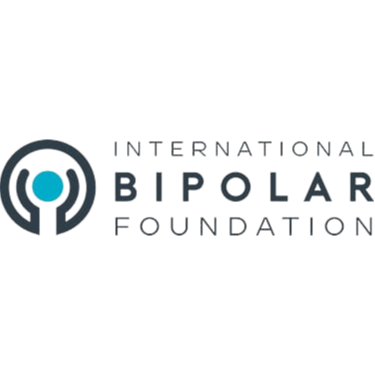Can Science ‘Prove’ There’s an Afterlife? Netflix Documentary Says Yes.
By Stephanie Pappas — 2021
The documentary emphasizes “proof” of life after death, but it mixes the debunked, the unknown and the unprovable.
YOU MIGHT ALSO LIKE
CLEAR ALL
BY TOPIC
BY TEACHER
BY TYPE
FILTER

TOPIC
- BIPOC Well-Being (18)
- Afterlife (16)
- Self-Care (15)
- Depression (13)
- Facing Own Death (13)
- Athlete Well-Being (10)
- Black Well-Being (10)
- Search for Purpose (10)
- Anxiety (9)
- Death-Positive Movement (9)
- Grief (9)
- Cancer (8)
- Entrepreneurship (8)
- Mediums (8)
- Parenting (8)
- Death or Loss of a Loved One (7)
- Community Healing (6)
- Disabled Well-Being (6)
- Identity Shifts (6)
- LGBTQIA Well-Being (6)
- Performance Pressure (6)
- Suicide (6)
- Talk Therapy (6)
- Visions and Hallucinations (6)
- Young Adult Well-Being (6)
- Honoring Emotion (5)
- Hospice (5)
- Living with Illness (5)
- Mental Health Challenges (5)
- Performance Anxiety (5)
- Psychic Abilities (5)
- Self-Limiting Beliefs (5)
- Self-Pressure (5)
- Spiritual Crisis (5)
- Traumatic Grief (5)
- Burnout (4)
- Christianity (4)
- Death or Loss of a Child (4)
- Female Empowerment (4)
- Happiness (4)
- Latinx Well-Being (4)
- Leadership (4)
- Neurodiversity (4)
- Psychedelic Research (4)
- Self-Discovery (4)
- Setting Limits and Boundaries (4)
- Speaking Your Truth (4)
- Stress Management (4)
- Trauma Healing (4)
- Work-Life Balance (4)
- Aging (3)
- Buddhism (3)
- Child’s Emotional Growth (3)
- Communication Skills (3)
- Consciousness (3)
- Courage (3)
- Cross-Cultural Dynamics (3)
- DMT (3)
- Existentialism (3)
- Family Dynamics (3)
- Growth Mindset (3)
- Past Lives and Reincarnation (3)
- Psychology (3)
- PTSD (3)
- Racial Identity (3)
- Racism (3)
- Self-Esteem (3)
- Self-Expression (3)
- Self-Worth (3)
- Spiritual Awakening (3)
- Transgender Well-Being (3)
- AAPI Well-Being (2)
- Activism/Service (2)
- ADD/ADHD (2)
- Addiction (2)
- Addiction Recovery (2)
- Anger Management (2)
- Authenticity (2)
- Autism (2)
- Belonging (2)
- Chronic Anxiety (2)
- Cognitive Behavioral Therapy (2)
- Connection with Nature (2)
- Cross-Cultural Parenting (2)
- Divorce and Breakup (2)
- Eating Disorders (2)
- Emotional Intelligence (EQ) (2)
- Epigenetics (2)
- Forest Bathing (2)
- Gender Identity (2)
- Handling a Loved One’s Illness (2)
- Immortality (2)
- Integrative Medicine (2)
- Laughter Therapy (2)
- LGBTQIA Sexuality (2)
- Men’s Well-Being (2)
- Moral Philosophy (2)
- Nonbinary Well-Being (2)
- Offering Support to Others (2)
- Othering (2)
- Personal Development (2)
- Physical Health (2)
- Presence (2)
- Psychology and Spirituality (2)
- Racial Discrimination (2)
- Resilience (2)
- Science and Spirituality (2)
- Self-Actualization (2)
- Self-Love (2)
- Shared-Death Experience (2)
- Spiritual Healing (2)
- Stress (2)
- Suffering (2)
- Telepathy (2)
- Transformation (2)
- Transitions (2)
- Values (2)
- Veteran Well-Being (2)
- Women’s Well-Being (2)
- Abandonment (1)
- Acceptance (1)
- Adaptability (1)
- Altered States (1)
- Animal Communication (1)
- Asking for Help (1)
- Awareness (1)
- Brain Health (1)
- Building Culture (1)
- Caregiver Well-Being (1)
- Channeling (1)
- Child’s ADD/ADHD (1)
- Chronic Health Conditions (1)
- Climate Change (1)
- Clinical Depression (1)
- Collaboration (1)
- Compassion (1)
- Connection (1)
- Creative Well-Being (1)
- Death or Loss of a Parent (1)
- Digital Life (1)
- Disconnection (1)
- Ego Dissolution (1)
- Emotional Labor (1)
- Empowerment (1)
- Energy Balancing (1)
- Enneagram (1)
- Environmental Justice (1)
- Exercise (1)
- Failure (1)
- Flower Essences (1)
- Forgiveness (1)
- Friendship (1)
- Gender and Spirituality (1)
- Genetics (1)
- Goal Setting (1)
- God (1)
- Healing Approaches (1)
- Hero’s Journey (1)
- Human Potential (1)
- Hypnosis (1)
- Illness and Injury (1)
- Imposter Syndrome (1)
- Indigenous Healing Approaches (1)
- Indigenous Well-Being (1)
- Insomnia (1)
- Islam (1)
- Journaling (1)
- Joy (1)
- Judaism (1)
- Learning Styles (1)
- Leaving a Religion (1)
- Life Challenges (1)
- Life Force Energy (1)
- Loneliness (1)
- Loss of Partner/Spouse (1)
- Managing Energy (1)
- MDMA (1)
- Memory (1)
- Military to Civilian Re-entry (1)
- Mind-Body Connection (1)
- Mindfulness (1)
- Mindfulness Practices (1)
- Neuroplasticity (1)
- Neuroscience (1)
- Panic Attacks (1)
- Parapsychology (1)
- Passion (1)
- Past Life Regression (1)
- Peak Performance (1)
- Personality Typing (1)
- Positive Thinking (1)
- Productivity (1)
- Psychedelic-Assisted Therapy (1)
- Racial Healing (1)
- Racial Justice (1)
- Regret (1)
- Rest (1)
- Self-Compassion (1)
- Self-Mastery (1)
- Self-Realization (1)
- Shame (1)
- Social Anxiety (1)
- Social Justice (1)
- Social Presence (1)
- Spiritual Growth (1)
- Spiritual Practices (1)
- Spiritual Quest (1)
- Taoism (1)
- Tarot (1)
- Vulnerability (1)
- Wake-Up Calls (1)
- Well-Being (1)
- Whiteness (1)
- Women’s Rights (1)
- Work Challenges (1)
- Zen Buddhism (1)
FILTER

TEACHER
- Stephen Levine (3)
- Viktor E. Frankl (3)
- BJ Miller (2)
- Jay Shetty (2)
- Jessica Dore (2)
- john a. powell (2)
- Karla McLaren (2)
- Michael Phelps (2)
- Parker J. Palmer (2)
- Rachel Naomi Remen (2)
- Ram Dass (2)
- Adam Grant (1)
- Atul Gawande (1)
- Barbara Fredrickson (1)
- Brian Weiss (1)
- Carl Jung (1)
- Caroline Shola Arewa (1)
- Carolyn Baker (1)
- Dannion Brinkley (1)
- Dante Alighieri (1)
- Deepak Chopra (1)
- Duane Elgin (1)
- Edward Hallowell (1)
- Elisabeth Kübler-Ross (1)
- Eric Maisel (1)
- Gabor Maté (1)
- Helen Palmer (1)
- Hyla Cass (1)
- J. Krishnamurti (1)
- James Hollis (1)
- Jean Houston (1)
- Joanna Macy (1)
- Judith Orloff (1)
- Lissa Rankin (1)
- Maria Popova (1)
- Mark Manson (1)
- Mark Victor Hansen (1)
- Martha Beck (1)
- Mirabai Bush (1)
- Monnica Williams (1)
- Nataly Kogan (1)
- Neale Donald Walsch (1)
- Ondrea Levine (1)
- Rachel Held Evans (1)
- Rainer Maria Rilke (1)
- Scott Shute (1)
- Serene Jones (1)
- Simone Biles (1)










